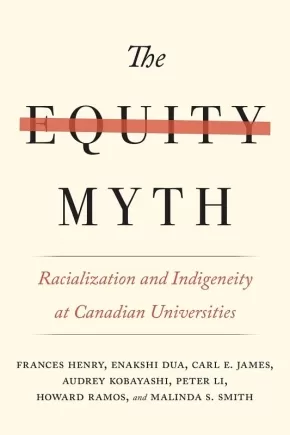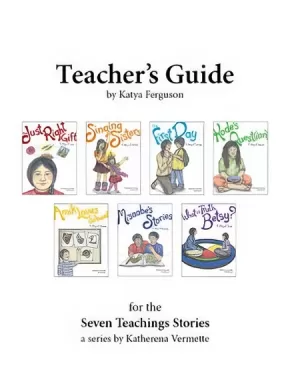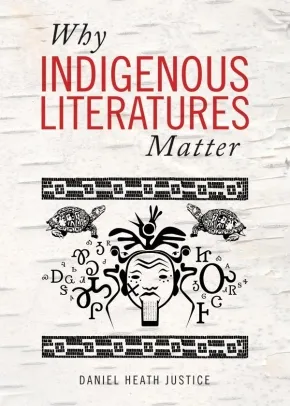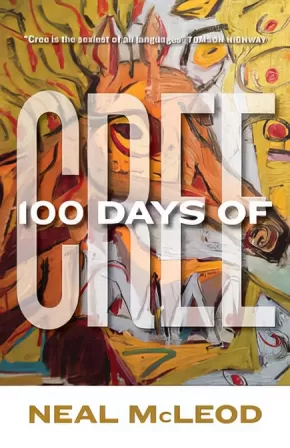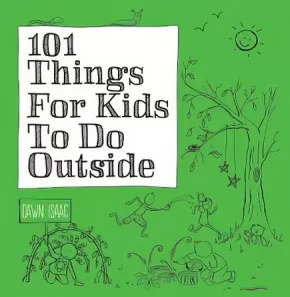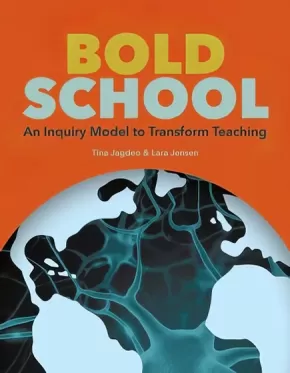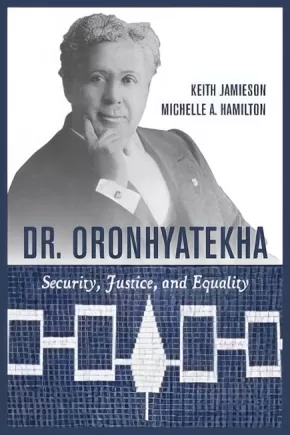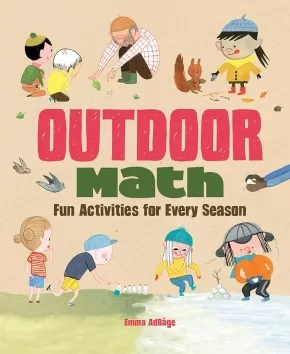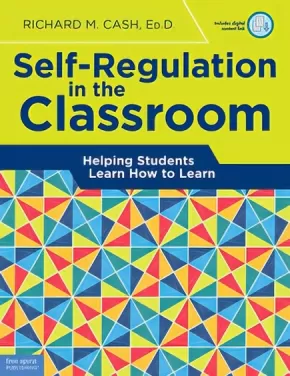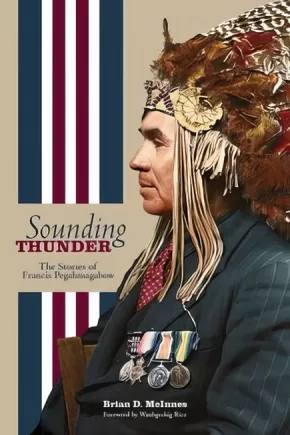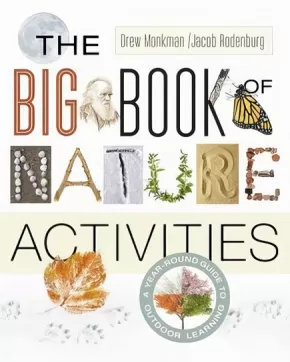
Educator Resources
151
-
165
of
213 Results;
Sort By
Go To
of 15
The Equity Myth: Racialization and Indigeneity at Canadian Universities
$34.95
Format:
Paperback
Text Content Territories:
Indigenous Canadian;
Grade Levels: University/College;
ISBN / Barcode: 9780774834896
Synopsis:
Synopsis:
The university is often regarded as a bastion of liberal democracy where equity and diversity are promoted and racism doesn’t exist. In reality, the university still excludes many people and is a site of racialization that is subtle, complex, and sophisticated. While some studies do point to the persistence of systemic barriers to equity and diversity in higher education, in-depth analyses of racism, racialization, and Indigeneity in the academy are more notable for their absence. The Equity Myth is the first comprehensive, data-based study of racialized and Indigenous faculty members’ experiences in Canadian universities.
Challenging the myth of equity in higher education, this book brings together leading scholars who scrutinize what universities have done and question the effectiveness of their equity programs. The authors draw on a rich body of survey data and interviews to examine the experiences of racialized faculty members across Canada who – despite diversity initiatives in their respective institutions – have yet to see changes in everyday working conditions. They also make important recommendations as to how universities can address racialization and fulfill the promise of equity in higher education.
A landmark study on racism in Canadian universities, The Equity Myth shows how the goal of achieving equity in higher education has been consistently promised, but never realized for racialized and Indigenous faculty members. It further reveals that the policies and diversity initiatives undertaken so far have only served to deflect criticism of a system that is doing little to change itself.
The book will be appeal to anyone interested in the issue of equity within the university setting. This includes faculty members from many disciplines; administrators at all levels; students and graduate students; and people interested in equity issues outside of academia.
Reviews
"[G]roundbreaking new research led by York University Professor Emeritus Frances Henry puts Canadian universities under the microscope. This new inquiry … shows that racialized and Indigenous faculty are low in numbers and even lower in terms of power, prestige and influence compared to non-racialized [white, male] counterparts within the university" — Megan Mueller, Manager, research communications, Office of the Vice-President Research & Innovation, York University
"The Equity Myth brings to the surface tensions that racialized faculty widely experience but seldom formally discuss in their workplaces. These include pay inequity, unequal hiring processes, a lack of visibility for racialized faculty in the professoriate, Euro-centric curricula and racial discrimination.
Until now, those tensions have been felt only in the abstract or anecdotally. Statistics Canada does not collect data on racialized minorities as part of the data it compiles on faculty and students at Canadian universities; nor do provincial governments collect such information. There has been recent change on this front from the University of Toronto and Ryerson University, both of which have announced in the past year that they would start collecting race-based data about their students. But no data exists on the effectiveness of university employment equity policies or policies against discrimination, despite their ubiquity across Canadian campuses." — Jackie Wong, University Affairs, November 2017
"The Equity Myth paints a bleak picture in which the hegemonic whiteness and patriarchy of the institution show remarkable resilience through lip service and tokenism. [...]On the other hand, it recommends possible concrete solutions[...]a must-read for anyone interested in the social sciences, in discrimination, or simply in being decent and well-informed human beings." — Sylvie Vrackx, Canadian Literature, May 2019
"This compelling and important text is the first of its kind in Canada. It provides rigorous and informative investigations of the status, representation, and everyday lived experiences of racialized and Indigenous scholars in English-speaking Canadian universities … I recommend this book not only for scholars but also for administrators serious about equity and institutional change." — Annette Henry, David Lam Chair in Multicultural Education and Professor in the Department of Language and Literacy Education and the Social Justice Institute, University of British Columbia
Educator Information
Related Topics: Education, Indigenous Studies, Post-Secondary Education, Race & Ethnicity; Sociology
Table of Contents
Preface and Acknowledgments
Additional Information
392 pages | 6.00" x 9.00" | 6 graphs, 33 tables
The Seven Teachings Stories Teacher's Guide
$12.95
Format:
Paperback
Text Content Territories:
Indigenous Canadian; First Nations; Anishinaabeg;
ISBN / Barcode: 9781553797050
Synopsis:
Synopsis:
Designed to help teachers in early years classrooms use The Seven Teachings Stories series, by Katherena Vermette, this guide provides the framework and key ideas educators need to become participants in a culturally responsive classroom community and to deepen their understanding of the Seven Teachings. With these stories, educators can create a space to discuss diverse perspectives, experiences, and traditions with young readers, and to foster a deeper understanding of ourselves as human beings and of our relationships with others.
This guide is presented in three sections and includes:
Key information about the Seven Teachings, Anishinaabe vocabulary, and the characters in each story.
Ideas to guide student learning.
Approaches and suggestions that teachers can apply to any of the seven stories.
Strategies and activities to deepen readers’ understanding of the abstract concepts addressed in the stories.
An appendix of reproducible classroom materials.
Additional Information
36 pages | 8.50" x 11.00"
Why Indigenous Literatures Matter
$19.99
Format:
Paperback
Text Content Territories:
Indigenous;
Grade Levels: University/College;
ISBN / Barcode: 9781771121767
Synopsis:
Synopsis:
Part survey of the field of Indigenous literary studies, part cultural history, and part literary polemic, Why Indigenous Literatures Matter asserts the vital significance of literary expression to the political, creative, and intellectual efforts of Indigenous peoples today. In considering the connections between literature and lived experience, this book contemplates four key questions at the heart of Indigenous kinship traditions: How do we learn to be human? How do we become good relatives? How do we become good ancestors? How do we learn to live together? Blending personal narrative and broader historical and cultural analysis with close readings of key creative and critical texts, Justice argues that Indigenous writers engage with these questions in part to challenge settler-colonial policies and practices that have targeted Indigenous connections to land, history, family, and self. More importantly, Indigenous writers imaginatively engage the many ways that communities and individuals have sought to nurture these relationships and project them into the future.
This provocative volume challenges readers to critically consider and rethink their assumptions about Indigenous literature, history, and politics while never forgetting the emotional connections of our shared humanity and the power of story to effect personal and social change. Written with a generalist reader firmly in mind, but addressing issues of interest to specialists in the field, this book welcomes new audiences to Indigenous literary studies while offering more seasoned readers a renewed appreciation for these transformative literary traditions.
Awards
- 2019 PROSE Award for Literature
100 Days of Cree
$24.95
Format:
Paperback
Text Content Territories:
Indigenous Canadian; First Nations; Cree (Nehiyawak);
ISBN / Barcode: 9780889774292
Synopsis:
Synopsis:
As an Elder once said, "Learn one Cree word a day for 100 days, and emerge a different person."
In 100 Days of Cree, Neal McLeod offers us a portal into another way of understanding the universe--and our place within it--while demonstrating why this funny, vibrant, and sometimes salacious language is "the sexiest of them all" (according to Tomson Highway).
Based on a series of Facebook posts, the 100 short chapters or "days" in the book present a chain of related words, some dealing with the traditional--the buffalo hunt, the seasons--and others cheekily capturing the detritus of modern life--from Internet slang to Johnny Cash songs to Viagra.
The result is both an introduction to the most widely spoken Indigenous language in Canada and the opportunity to see the world, and ourselves, in another way.
Reviews
"The nonfiction book is divided into 100 themes and offers Cree words and English explanations for everything from traditional subjects such as powwows and medicine to modern subjects such as Facebook and Star Wars. It also includes a guide to pronunciation written by Arok Wolvengrey, a linguist and the author of a Cree-English dictionary. 'When we think about indigenous languages, there’s a part of us that thinks they’re dying languages, ' URP publisher Bruce Walsh said. 'And then this manuscript comes in that demonstrates a living, vital language.' McLeod said that he and Wolvengrey worked to keep a balance between traditional usage and modern adaptations. 'To revitalize our languages, we have to do two things: we have to document the classical terminology, because within that terminology are all of our metaphors and idioms; but we also have to think of how to put old words together, to coin words, to describe the contemporary world.'" — Laura Godfrey, Publishers Weekly
Additional Information
325 pages | 5.50" x 7.00"
101 Things For Kids To Do Outside
$19.95
Format:
Paperback
ISBN / Barcode: 9781770857117
Synopsis:
Synopsis:
Let them go outside and play! More parents are heeding the advice of specialists who urge them to do just that. By playing outside with friends, kids learn valuable interpersonal and negotiation skills and how to make decisions. Outdoor play teaches about the natural world, fosters creativity, and encourages physical activity.
101 Things For Kids To Do Outside is ideal for parents, teachers, and all those working with youth. This book is ideal for the children who like gaming, TV, movies, the soft couch, and even too many snacks. The kids who believe "there's nothing to do outside" can learn and be encouraged to experience the joy of outdoor play.
Each activity is described in language easy for a 6- to 9-year-old and illustrated with engaging graphics. Younger children may need direction, at least the first time. Large pictures display all the fun to be had. The activities range from 10 minutes to hours and hours of fun. Some require creativity, make-believe or physical exertion but they are all outside. Perfect for rainy days, sunshiny days, even snowy days.
Examples of the 101 activities are:
Weave a bird's nest
Set up a potion lab
Make nature rubbings
Build a crawl tunnel
Hold a mini Olympics
Build a human sundial
Make a nature walk bracelet
Capture animal tracks
Fly a homemade kite
Make a rain gauge
Make a snow maze.
Reviews
While the cover art is adorable, the photos inside are stunning! This book is full of creative, easy, and original ideas that your kids will adore.
— MaryAnne, Mama Smiles Blog
Great gift for any child... Would also be resourceful to any parent, teacher or caregivers... Plenty of fun ideas not only for children, but for families to enjoy together. And the most important thing -- with 101 Things For Kids To Do Outside, your kids will never be bored again.
— Lily Zunic, Craft, Learn and Play Blog
The hands-on guide, 101 Things for Kids to Do Outside, gives you more than enough activities, games and projects to get your children or students moving and learning in the great outdoors. Colorful illustrations and photographs combine with detailed and easy to follow instructions in order to spark lots of outdoor exploration... This book is great for parents and educators, but also for young people ages 5-12 to lead their own explorations.
— Raine Sillito, Green Teacher
Additional Information
224 pages | 8.25" x 8.50" | full colour throughout, line drawings, resources, index
Achieving Indigenous Student Success: A Guide for Secondary Classrooms
$29.00
Format:
Paperback
Text Content Territories:
Indigenous Canadian;
ISBN / Barcode: 9781553796565
Synopsis:
Synopsis:
In Achieving Indigenous Student Success, author Pamela Toulouse provides strategies, lessons, and hands-on activities that support both Indigenous and non-Indigenous learners in the secondary classroom. Read chapters on topics such as:
- Indigenous Pedagogy and Classrooms Considerations
- Indigenous Self-Esteem and Mental Health Activities
- Differentiated Instruction and Bloom's Taxonomy
- Attrition, Retention, Transition, and Graduation Continuum
- Indigenous Themes and Material Resources
- Culturally Appropriate Secondary Lesson Plans by Subject (including English, Math, Science, History, Geography, Health, Physical Education, Drama, Music, Visual Arts, Technological Studies, Business Studies, Indigenous Worldviews, Guidance and Career Studies, and Social Studies and the Humanities)
This book is for all teachers of grades 9–12 who are looking for ways to infuse Indigenous perspectives into their courses. Ideas include best practices for retention/transition/graduation planning, differentiated instruction, assessment, and equity instruction. Using appropriate themes for curricular connections, the author presents a culturally relevant and holistic approach that helps to build bridges between cultures and fosters self-esteem in all students.
Additional Information
| 184 pages | 8.00" x 10.50" |
Bold School (3 in Stock - Out of Print)
$25.00
Format:
Paperback
ISBN / Barcode: 9781553796725
Synopsis:
Synopsis:
The move toward teaching through inquiry is evident in curriculum documents across the continent. In this book, you’ll find a clear approach for incorporating inquiry into your classroom.
Based on current research and solid classroom experience, authors Tina Jagdeo and Lara Jensen examine what inquiry is, then break it down into manageable steps that can be used with any K–12 age group. They explore and explain each step, providing real-life classroom examples.
The Bold School model
- provides a four-step inquiry process as a manageable way to deepen understanding and solve a problem or issue.
- focuses on the importance of critical, creative and compassionate thinking skills in today’s world.
- uses provocations to kickstart inquiry and encourage students to wonder.
- builds a toolkit of strategies for research.
- encourages divergent thinking to brainstorm ways students can make a difference in local and global contexts.
- explores a variety of ways to take action.
- shows administrators how to support teachers to teach through inquiry.
Additional Information
127 pages | 7.00" x 9.00"
Dr. Oronhyatekha: Security, Justice, and Equality
$26.99
Format:
Paperback
Text Content Territories:
Indigenous American; Native American; Haudenosaunee (Iroquois); Kanyen'keha:ka (Mohawk);
Grade Levels: University/College;
ISBN / Barcode: 9781459706637
Synopsis:
Synopsis:
A man of two cultures in an era where his only choices were to be a trailblazer or get left by the wayside.
Dr. Oronhyatekha (“Burning Sky”), born in the Mohawk nation on the Six Nations of the Grand River territory in 1841, led an extraordinary life, rising to prominence in medicine, sports, politics, fraternalism, and business. He was one of the first Indigenous physicians in Canada, the first to attend Oxford University, a Grand River representative to the Prince of Wales during the 1860 royal tour, a Wimbledon rifle champion, the chairman of the Grand General Indian Council of Ontario, and Grand Templar of the International Order of Good Templars. He counted among his friends some of the most powerful people of the day, including John A. Macdonald and Theodore Roosevelt. He successfully challenged the racial criteria of the Independent Order of Foresters to become its first non-white member and ultimately its supreme chief ranger.
At a time when First Nations peoples struggled under assimilative government policy and society’s racial assumptions, his achievements were remarkable.
Oronhyatekha was raised among a people who espoused security, justice, and equality as their creed. He was also raised in a Victorian society guided by God, honour, and duty. He successfully interwove these messages throughout his life, and lived as a man of significant accomplishments in both worlds.
Awards
2016 Ontario Historical Society Joseph Brant Award winner
2017 Speaker's Book Award short-listed
Review
With their detailed biography of this giant of Canadian history, Jamieson and Hamilton have done an enormous favour both for aboriginals and non-aboriginals living on this piece of geography currently known as Canada.
— Tworowtimes
Key Points
- A comprehensive biography of Dr. Oronhyatekha, Canada’s first Indigenous physician, and an influential First Nations statesman.
- Covers his friendships with Teddy Roosevelt and John A. Macdonald and his international business.
- He was the first non-White member of the Independent Order of Foresters (IOF), a fraternally organized life-insurance company, having successfully challenged the race criteria for membership.
- As CEO of the IOF, he transformed it from a near-bankrupt, legally embattled organization to a financially stable international company.
- Ahead of his time, Oronhyatekha attempted to broaden the mandate of the IOF so that women and French-Canadians could belong.
- Also details the political, social, and historical context of the Six Nations of the Grand River community in the mid-nineteenth century.
Additional Information
368 pages | 6.00" x 9.00" | b&w and colour illustrations | notes, index, bibliography
Indigenous Writes: A Guide to First Nations, Métis & Inuit Issues in Canada
$32.00
Format:
Paperback
Text Content Territories:
Indigenous Canadian; First Nations; Inuit; Métis;
ISBN / Barcode: 9781553796800
Synopsis:
Synopsis:
Delgamuukw. Sixties Scoop. Bill C-31. Blood quantum. Appropriation. Two-Spirit. Tsilhqot’in. Status. TRC. RCAP. FNPOA. Pass and permit. Numbered Treaties. Terra nullius. The Great Peace…
Are you familiar with the terms listed above? In Indigenous Writes, Chelsea Vowel, legal scholar, teacher, and intellectual, opens an important dialogue about these (and more) concepts and the wider social beliefs associated with the relationship between Indigenous peoples and Canada. In 31 essays, Chelsea explores the Indigenous experience from the time of contact to the present, through five categories – Terminology of Relationships; Culture and Identity; Myth-Busting; State Violence; and Land, Learning, Law, and Treaties. She answers the questions that many people have on these topics to spark further conversations at home, in the classroom, and in the larger community.
Reviews
"Chelsea attacks issues head on, with humour and wit, sarcasm and cynicism and clear, concise and well-organized information. She makes further research easy, as every chapter includes copious endnotes with links to her curated resources. She explains the terminology of identity — status, non-status, registered, membership, Métis, Inuit, cultural appropriation and two-spiritedness." —Nancy Adams-Kramp
"While subtitled A Guide to First Nations, Métis and Inuit Issues in Canada, it would be a mistake to see Indigenous Writes as a book primarily about Indigenous people. Instead, it is much more about all of us — our relationship as non-Indigenous and Indigenous Canadians, and how it has been shaped (and misshaped) by the historic and contemporary governance of these issues.
For any Canadian who wishes to have an informed opinion about the country that we share — or, more to the point, publicly share that opinion — Indigenous Writes is essential reading."—Michael Dudley
Educator & Series Information
This book is part of the Debwe Series.
For all teachers.
Approved for Manitoba classrooms.
ERAC approved.
Additional Information
291 pages | 7.00" x 9.00"
mâci-nêhiyawêwin: Beginning Cree
$34.95
Artists:
Format:
Coil Bound
Text Content Territories:
Indigenous Canadian; First Nations; Cree (Nehiyawak);
ISBN / Barcode: 9780889774353
Synopsis:
Synopsis:
Designed as an introduction for Cree language learners, Beginning Cree acts as a self-study aid--a much-needed resource in today's world where most students cannot speak Cree fluently. Basic grammar units and everyday vocabulary items guide the student through the building blocks of the language, and expansion drills and exercises reinforce lessons and prepare the student for further study. With over 100 delightful illustrations, Beginning Cree grounds the language in traditional and contemporary contexts.
Educator & Series Information
This book is recommended for ages 12+.
Table of Contents
Chapter One: Introduction
Chapter Two: Nouns
Chapter Three: Prepositions and Pronouns
Chapter Four: Animate Intransitive Verbs
Chapter Five: Inanimate Intransitive Verbs
Chapter Six: Possessives: Kinship Terms
Chapter Seven: Transitive Inanimate Verbs
Chapter Eight: Transitive Animate Verbs
Verb Charts
Conjugation Patterns
Vocabulary List
Bibliography
Notes
The Canadian Indigenous Books for School list recommends this resource for Grades 1-12 for these subject areas: Indigenous Language Studies, Language Studies.
Part of the Indigenous Languages for Beginners series.
The book is specifically geared towards learners of the Plains Cree "Y" dialect, also known as the "Y" dialect.
Additional Information
165 pages | 8.50" x 11.00" | black and white illustrations | spiral bound
Outdoor Math: Fun Activities for Every Season
$16.95
Artists:
Format:
Hardcover
ISBN / Barcode: 9781771386128
Synopsis:
Synopsis:
In this innovative book, Emma Adbåge encourages children to get outside, where they can have fun interacting with the natural world while learning math. Adbåge has created twenty-two outdoor activities, organized by season.
Through play, children will learn about numeracy and arithmetic, as well as math concepts such as shapes, time, greater/less than, even and odd numbers, patterns and grids. The activities have simple-to-follow instructions and are accompanied by adorable illustrations that provide clear visual demonstrations. The natural materials required --- stones, pinecones, snowballs, worms --- are easy to find in many environments. Supplementary spreads introduce the numbers 1 to 10 and further explore addition/subtraction and multiplication/division, with simplified explanations and illustrated examples.
Studies have shown that learning outdoors helps kids retain information and skills, and that physically active children perform better in a variety of subjects --- including math. This book could be used alongside other math coursework all school year, since the activities have direct curricular applications. While the thrust of the book is math, there are also science lessons here, particularly regarding the properties of nature and how things change during the four seasons. Many of the activities can be done in pairs or groups, promoting teamwork and cooperation. A list of activities in the back matter indexes the activities and categorizes them by the math skills they develop.
All activities promote active living and an understanding of the natural world, while developing important character skills, such as teamwork and cooperation.
Review
"This is a worthy addition to a school collection or a public library shelf for motivated parents and preschool teachers who strive to create a rich learning environment."
—School Library Journal
Educator Information
Curriculum Links: Math, Number Sense, Early Numeracy.
Covers math fundamentals including counting, addition, subtraction, multiplication, and division.
Cross-curricular applications in math, science, physical education, and language arts.
Recommended for ages 5 to 8 / grades K to 3.
Additional Information
26 pages | 8.12" x 9.75"
Self-Regulation in the Classroom: Helping Students Learn How to Learn (1 in Stock)
$59.95
Format:
Paperback
ISBN / Barcode: 9781631980329
Synopsis:
Synopsis:
Grit. Determination. Mindset. Self-control.
All these terms are attributes of self-regulated learning, which is the ability to manage impulses, stay focused on tasks through completion, and develop a sense of autonomy in learning to achieve academic success.
In Self-Regulation in the Classroom, Richard M. Cash translates research and theory into easy-to-implement strategies and ideas you can use to help students—with special needs and without—become self-directed learners, including ways for them to:
- increase their engagement in learning
- boost their confidence
- avoid meaningless distraction
- develop effective study habits
- set and achieve goals
- use failure as a learning tool
- reflect and relax
A foundation for promoting positive behavior and executive function skills, this book can help you meet the needs of all your learners and help them reach their potential in the classroom and in the real world.
The teacher and student forms, charts, and lists in the book are downloadable for use in your classroom. Also available is a free study guide to be used in PLCs and book study groups.
“Rich in research and theory but practical enough for Monday morning classroom activities, this book is for anyone looking to increase student engagement and help students regulate their thinking and behavior.”—Nathan Warner, M.Ed., assistant principal
Additional Information
184 pages | 8.50" x 11.00"
Sounding Thunder: The Stories of Francis Pegahmagabow
$24.95
Format:
Paperback
Text Content Territories:
Indigenous Canadian; First Nations; Anishinaabeg; Ojibway;
ISBN / Barcode: 9780887558245
Synopsis:
Synopsis:
Francis Pegahmagabow (1889–1952), a member of the Ojibwe nation, was born in Shawanaga, Ontario. Enlisting at the onset of the First World War, he became the most decorated Canadian Indigenous soldier for bravery and the most accomplished sniper in North American military history. After the war, Pegahmagabow settled in Wasauksing, Ontario. He served his community as both chief and councillor and belonged to the Brotherhood of Canadian Indians, an early national Indigenous political organization. Francis proudly served a term as Supreme Chief of the National Indian Government, retiring from office in 1950.
Francis Pegahmagabow’s stories describe many parts of his life and are characterized by classic Ojibwe narrative. They reveal aspects of Francis’s Anishinaabe life and worldview. Interceding chapters by Brian McInnes provide valuable cultural, spiritual, linguistic, and historic insights that give a greater context and application for Francis’s words and world. Presented in their original Ojibwe as well as in English translation, the stories also reveal a rich and evocative relationship to the lands and waters of Georgian Bay.
In Sounding Thunder, Brian McInnes provides new perspective on Pegahmagabow and his experience through a unique synthesis of Ojibwe oral history, historical record, and Pegahmagabow family stories.
Awards
- Fred Landon Award, Ontario Historical Society (2018)
- American Book Award, Before Columbus Foundation (2017)
Reviews
“Debwemigad Nimkiig gaye Aadizookanag zhawenimaawaad. Brian McInnes has clearly been blessed by the Thunders and Great Storytellers. With Sounding Thunder he has achieved the perfect balance of personal memoir and scholarly inquiry. He shares with readers the stories that have connected one generation to another and in these cycles we find the truth about living. Dibaajimowinan omaada’oozhinang mii igo aanikoobijige.” – Margaret Ann Noodin, Assistant Professor, Department of English, University of Wisconsin
“Debwemigad Nimkiig gaye Aadizookanag zhawenimaawaad. Brian McInnes has clearly been blessed by the Thunders and Great Storytellers. With Sounding Thunder he has achieved the perfect balance of personal memoir and scholarly inquiry. He shares with readers the stories that have connected one generation to another and in these cycles we find the truth about living. Dibaajimowinan omaada’oozhinang mii igo aanikoobijige.” – Margaret Ann Noodin, Assistant Professor, Department of English, University of Wisconsin
“This uniquely intimate portrait illuminates Francis’s commitment to live in a way that reflected the spiritual values of sharing and respect for life, despite his military record of 378 enemy kills for which he became renowned.” – Allyson Stevenson, University of Guelph, Canadian Journal of History
“McInnes’ Sounding Thunder brings complexity and nuance to the story (or stories) of Francis Pegahmagabow’s life. Past authors have portrayed Pegahmagabow alternatively as a warrior, a veteran, and/or a political activist. Certainly, these depictions capture snapshots of his character. But McInnes goes much further, adding breadth and depth to the sketch of the Nishnaabe man from Georgian Bay. He has produced a high-quality piece of historical research that tells an important story of Indigenous peoples as human beings with challenges that exist both within and without the constraints of colonialism.” – Eric Story, Laurier Centre for Military, Strategic and Disarmament Studies
“Sounding Thunder is invaluable for those working in biographical, historical, Indigenous, military and political studies and the general reader. McInnes skillfully contextualizes his subject as one of Canada’s greatest war heroes as well as a member of his family, community, and Anishinaabe people.” – Brock Pitawanakwat, Assistant Professor, Department of Indigenous Studies, University of Sudbury
“Brian McInnes’ book is both elegant and masterful in its weaving of language, spirituality, storytelling, family, community, and physical place on the lands and waters of Georgian Bay as he presents the world and life of his great-grandfather, Francis Pegahmagabow. McInnes’ presentation of family stories in both Ojibwe and English, and his placement of them within their historical and geographical context, underlines Waubgeshig Rice’s claim in his foreword to Sounding Thunder that the book will remain ‘a vital resource for generations to come.’” – Jurors, Fred Landon Award, Ontario Historical Society
Educator Information
This book would be useful for social studies and history courses for students in grades 11 and 12 or at a college/university level.
This book would be useful for social studies and history courses for students in grades 11 and 12 or at a college/university level.
Additional Information
240 pages | 6.00" x 9.00" | 31 b&w illustrations | 5 b&w tables | bibliography
240 pages | 6.00" x 9.00" | 31 b&w illustrations | 5 b&w tables | bibliography
Student Diversity, 3rd Edition
$28.95
Format:
Paperback
ISBN / Barcode: 9781551383187
Synopsis:
Synopsis:
Classroom strategies to meet the learning needs of all students.
This well-loved guide has now been fully revised to explore the latest theories, research, and best practice in inclusive classrooms. From ice-breaking activities to ways to meet specific expectations in all areas of the curriculum, teachers will discover practical strategies and organizational frameworks that will help them to reach all students.
Whether you`re searching for new ways to inspire students with different learning styles, celebrate the abilities of the physically challenged, or boost the skills of those learning English for the first time, Student Diversity has what you need to meet and defeat the wide variety of challenges in today`s classroom. Packed with examples of student work and reproducible worksheets, this book will help to smooth the daily path of beginning and experienced teachers alike.
Additional Information
161 pages | 8.20" x 10.80"
The Big Book of Nature Activities: A Year-Round Guide to Outdoor Learning
$49.99
Format:
Paperback
Grade Levels: University/College;
ISBN / Barcode: 9780865718029
Synopsis:
Synopsis:
The average child can identify over 1000 corporate logos, but only 10 native plants or animals—a telling indictment of our modern disconnection from nature. Soaring levels of obesity, high rates of ADHD, feelings of stress and social awkwardness and "Nature Deficit Disorder" are further unintended consequences of a childhood spent primarily indoors.The Big Book of Nature Activities is a comprehensive guide for parents and educators to help youth of all ages explore, appreciate and connect with the natural world. This rich, fully illustrated compendium features:Nature-based skills and activities such as species identification, photography, journaling and the judicious use of digital technologyIdeas, games and activities grounded in what's happening in nature each seasonCore concepts that promote environmental literacy, such as climate change and the mechanisms and wonder of evolution, explained using a child-friendly, engaging approachLists of key species and happenings to observe throughout the year across most of North America.Perfect for families, educators, and youth leaders, The Big Book of Nature Activities is packed with crafts, stories, information and inspiration to make outdoor learning fun!
Sort By
Go To
of 15

